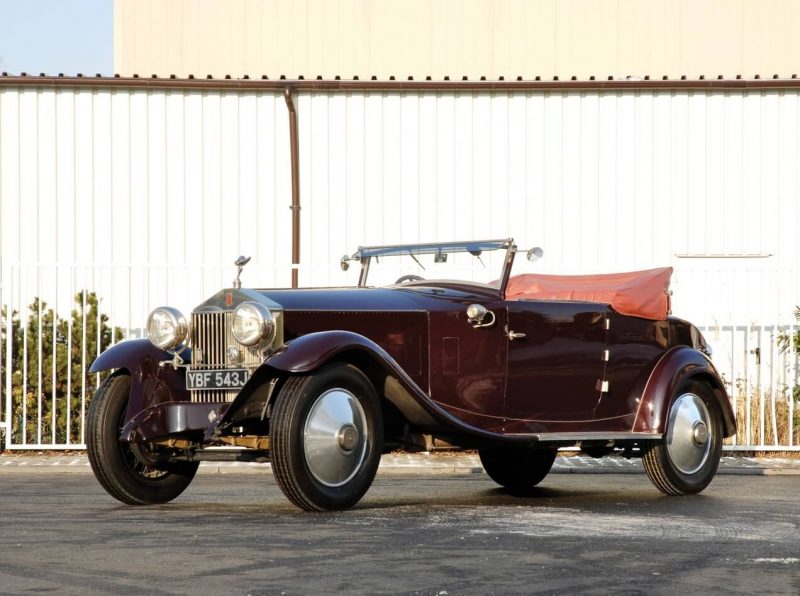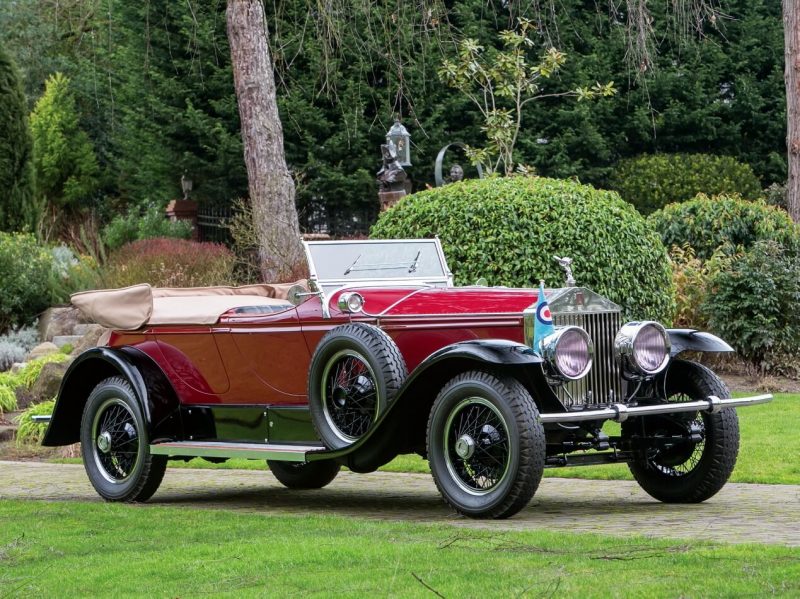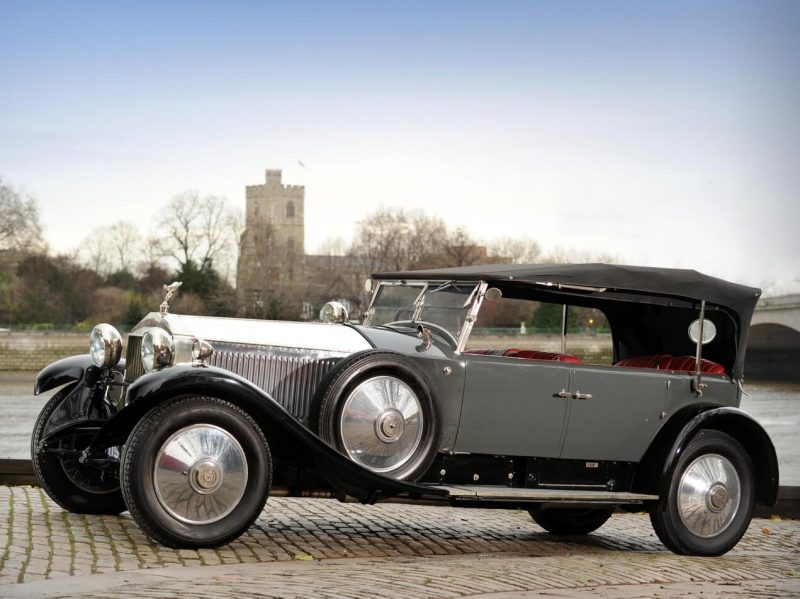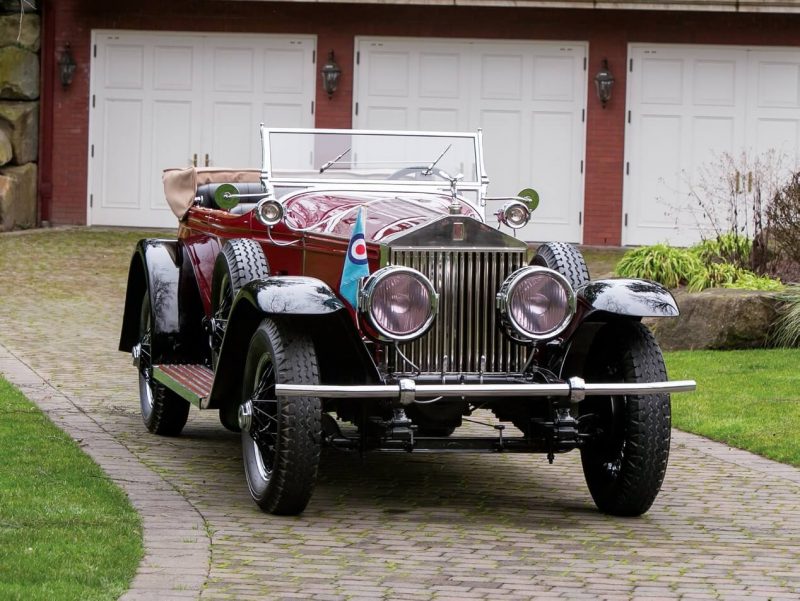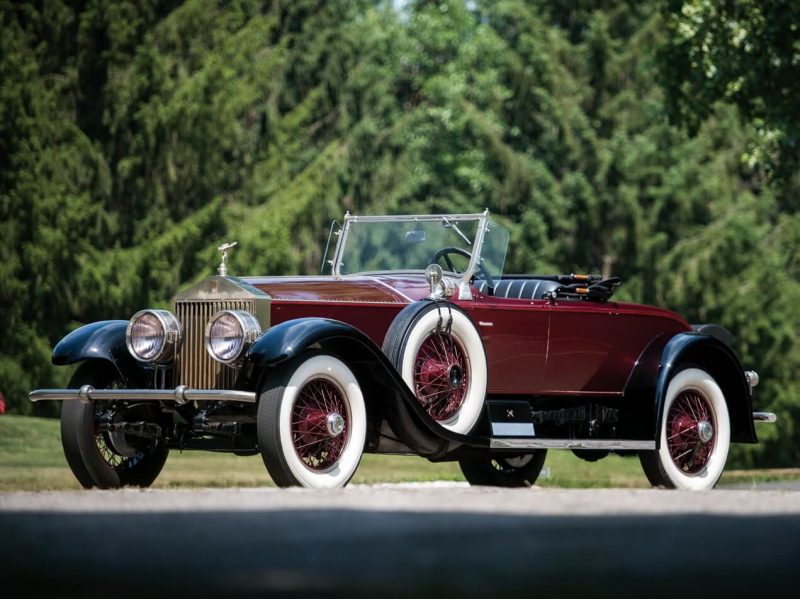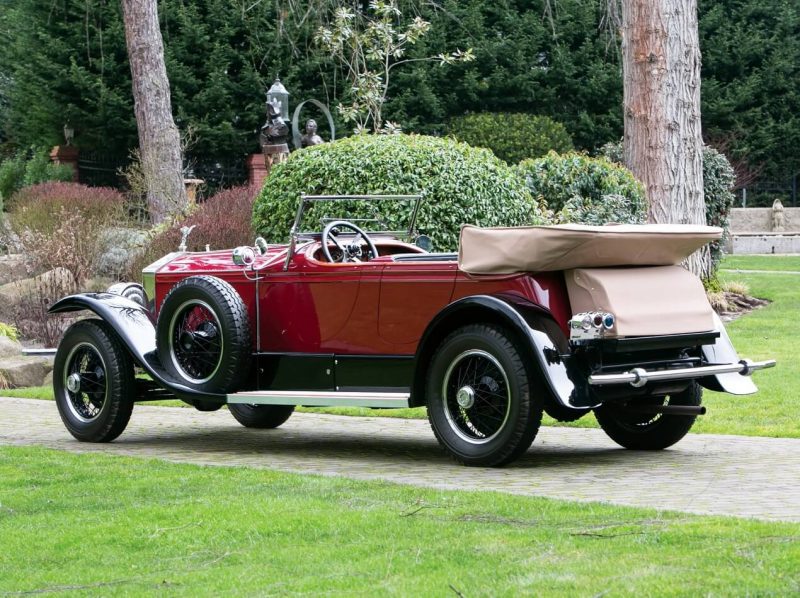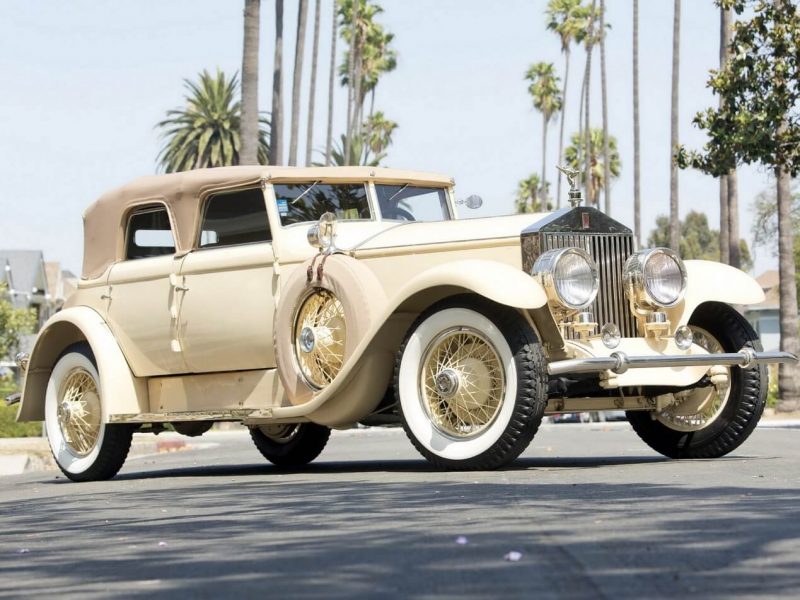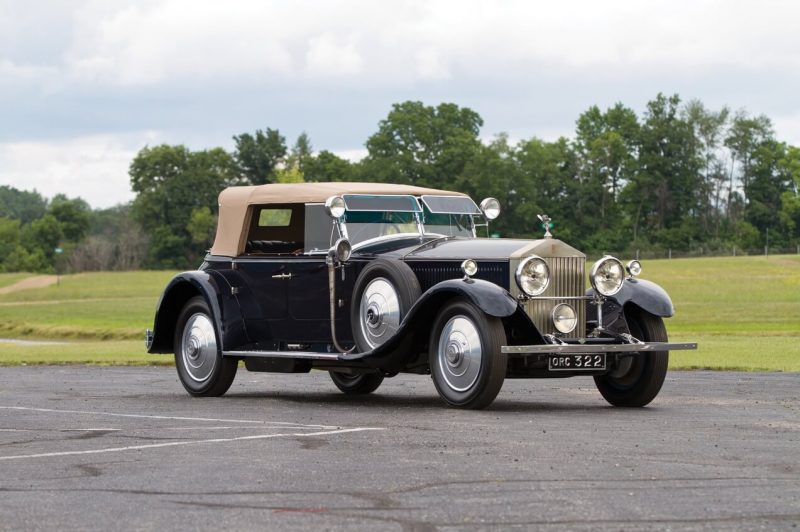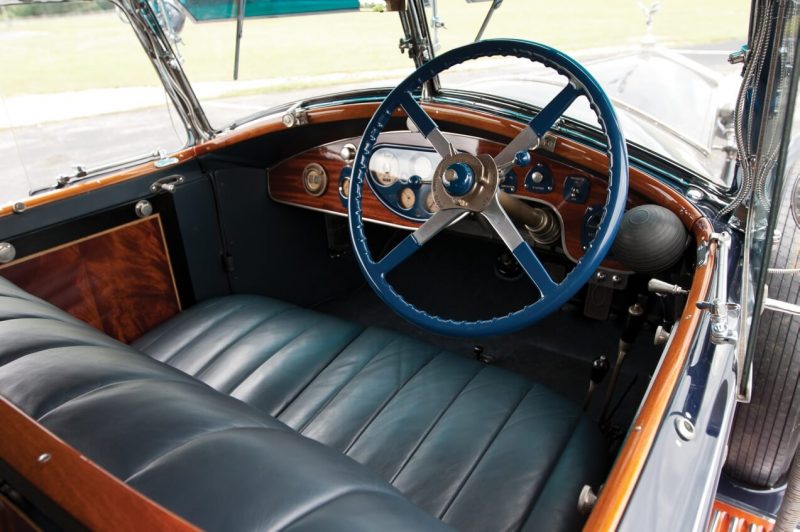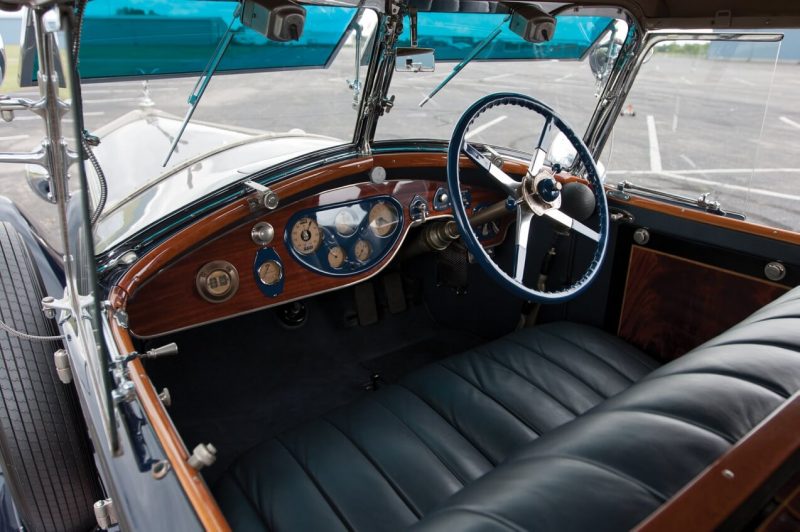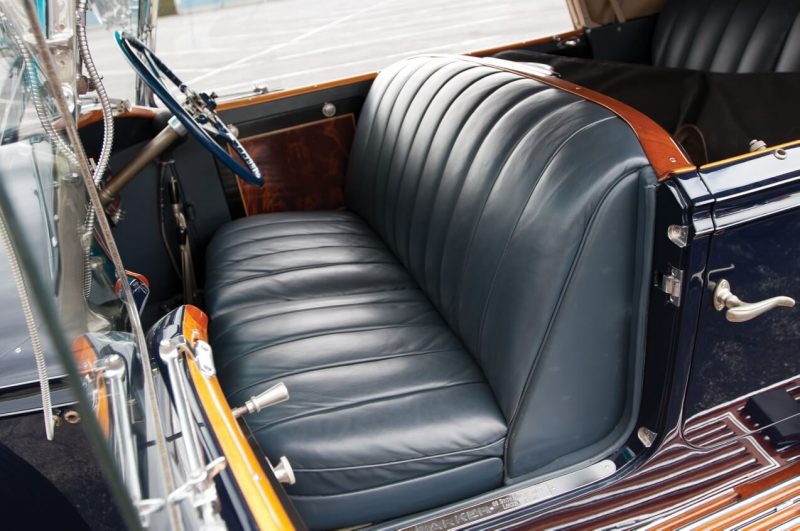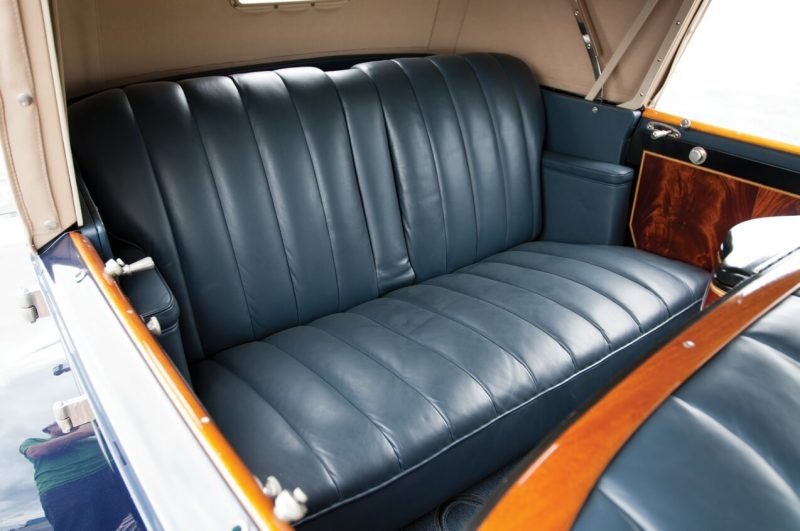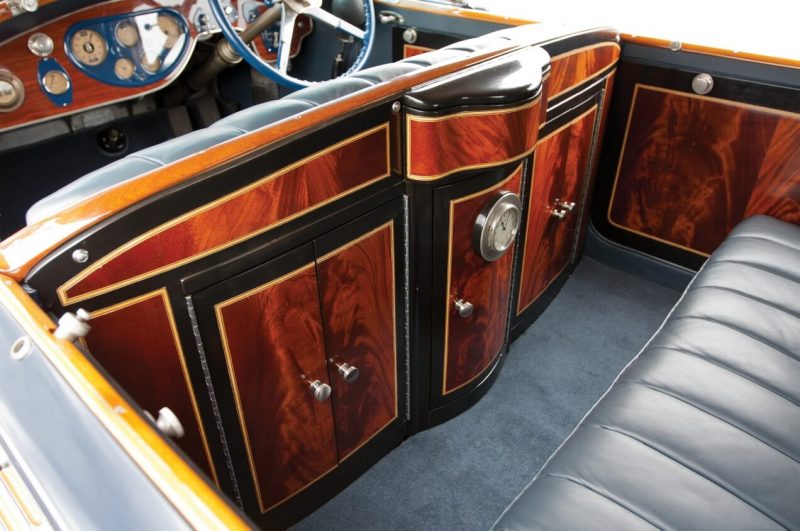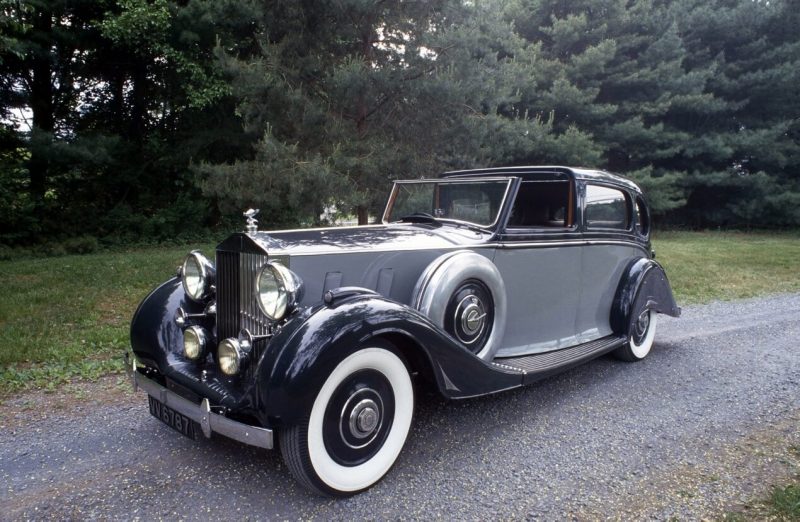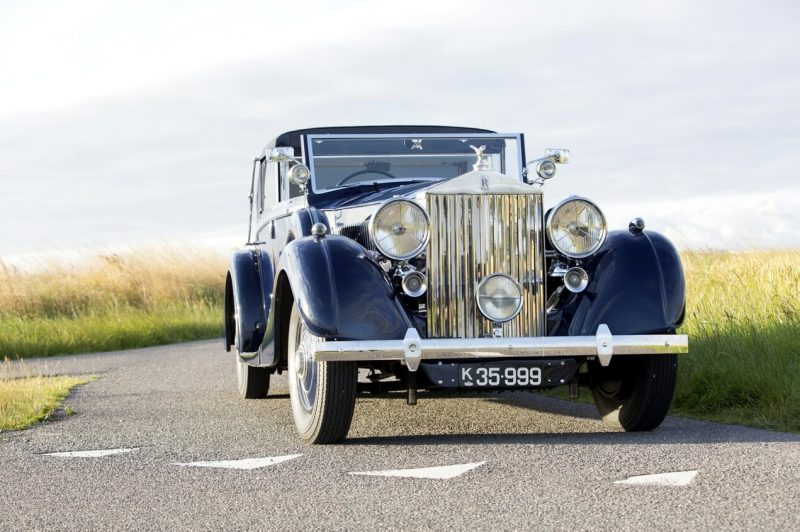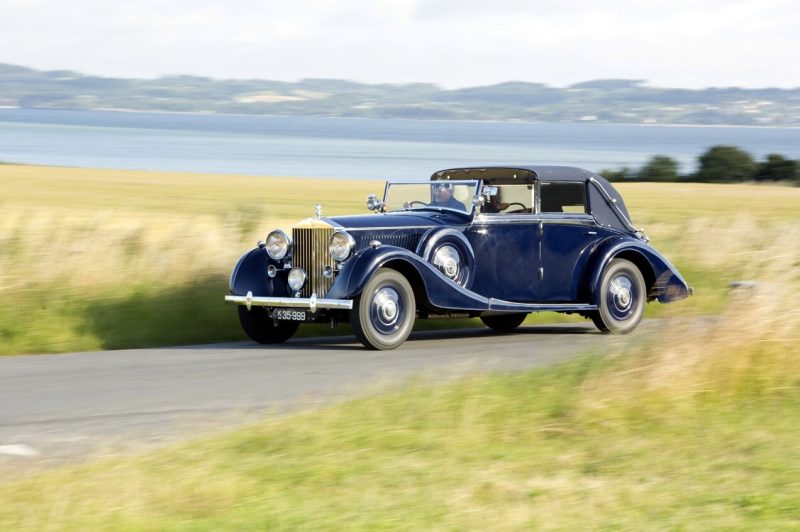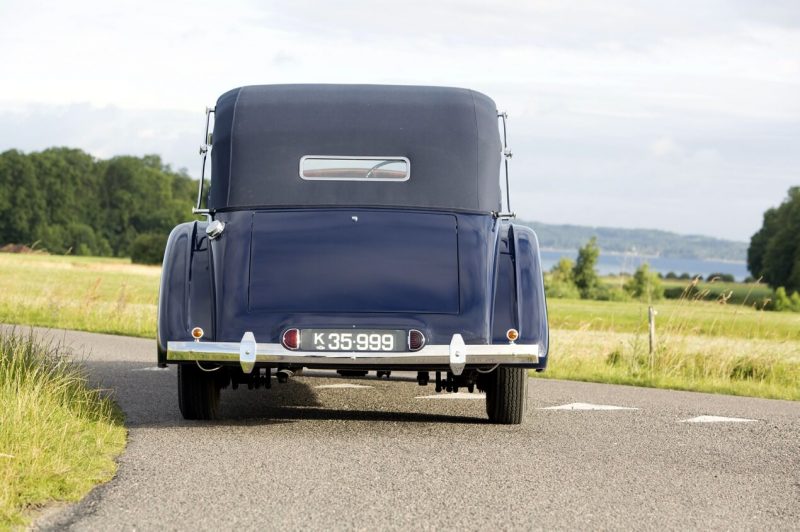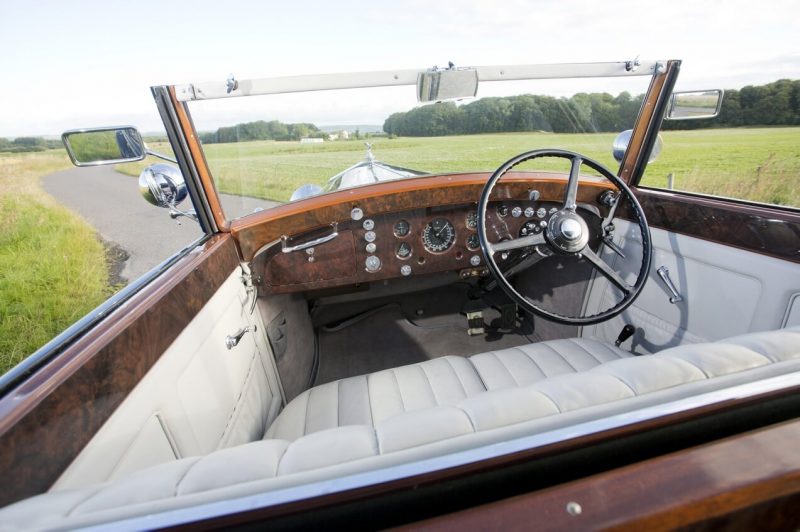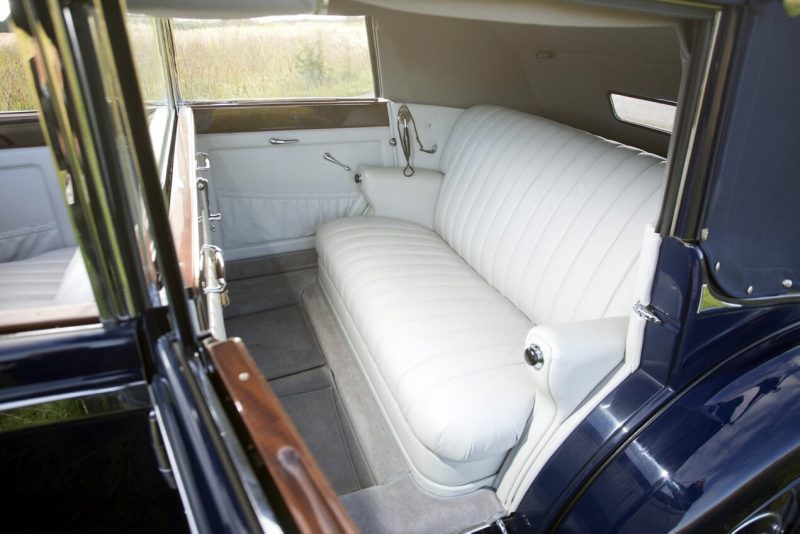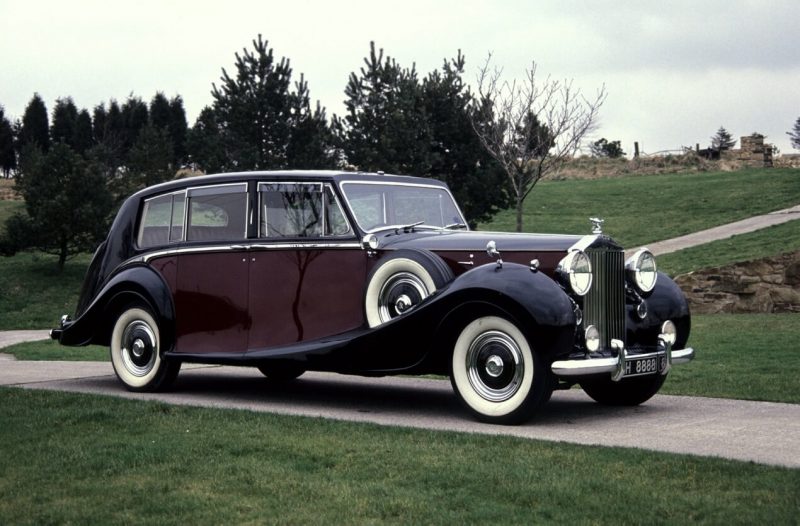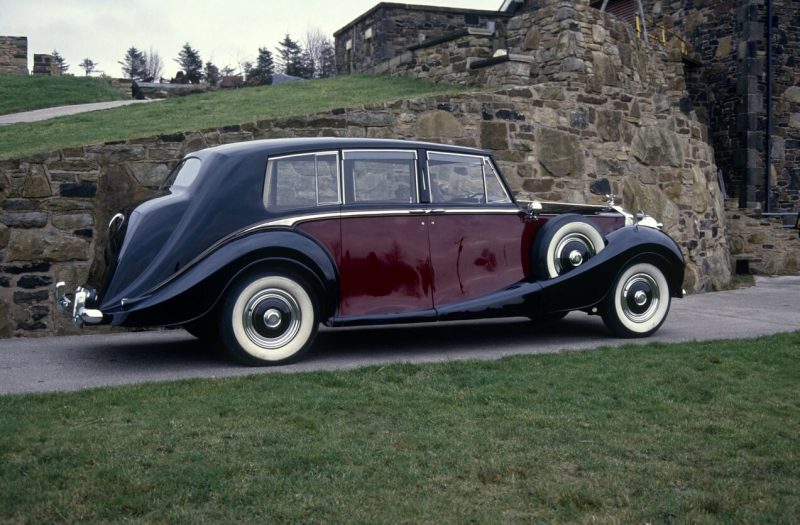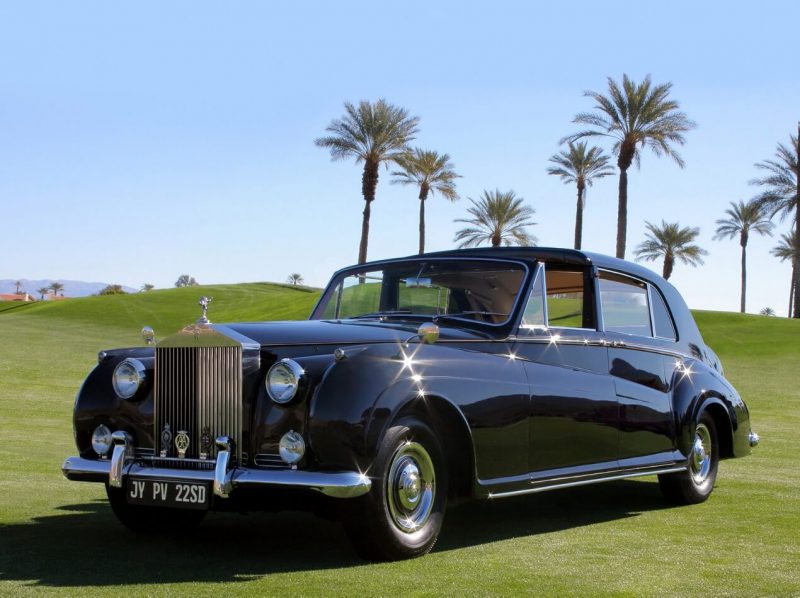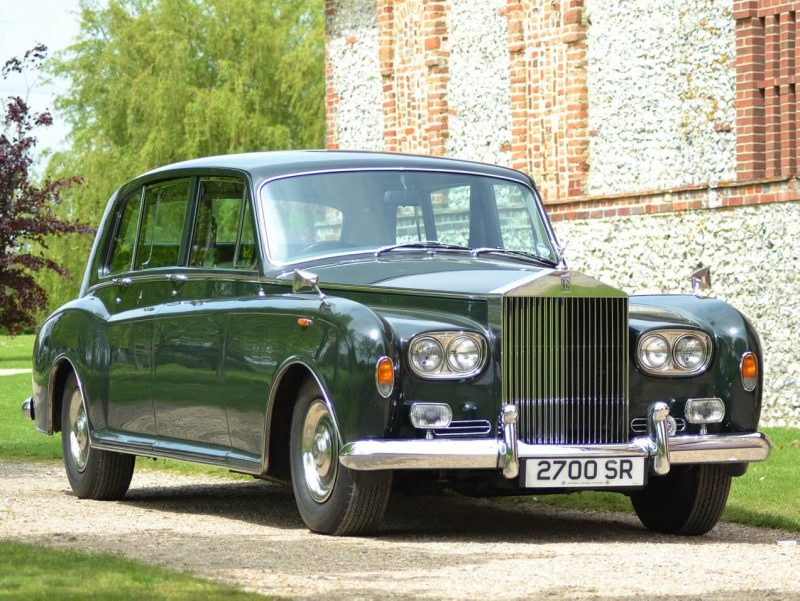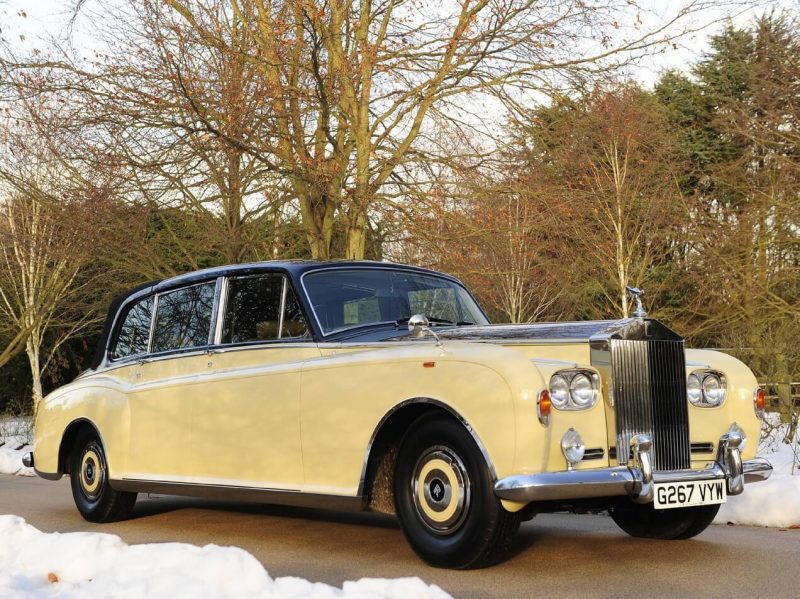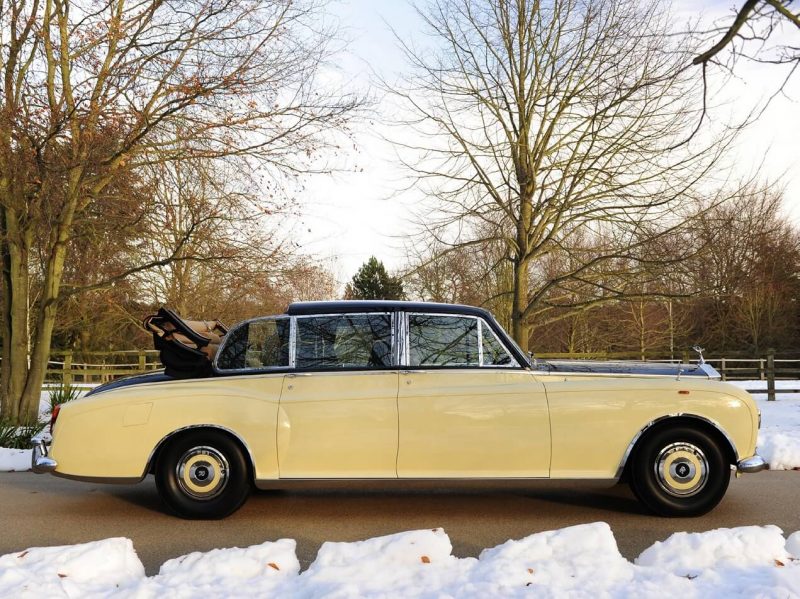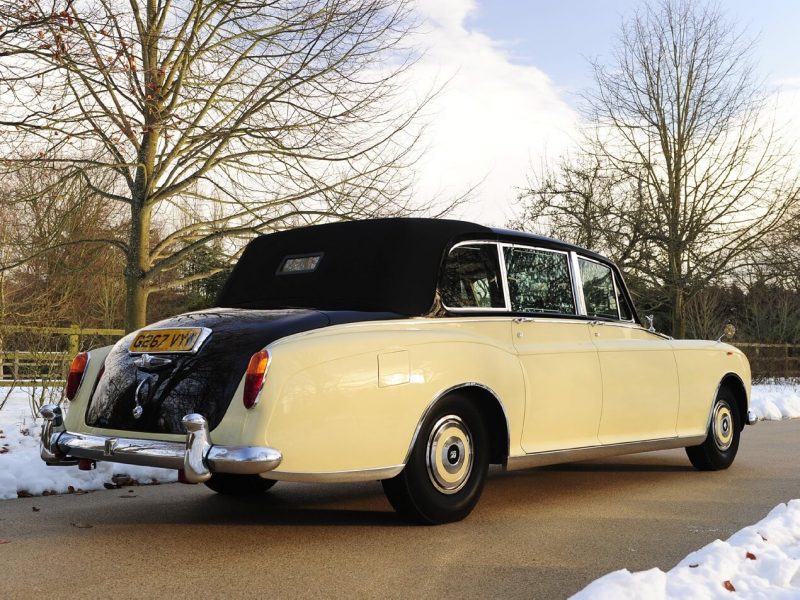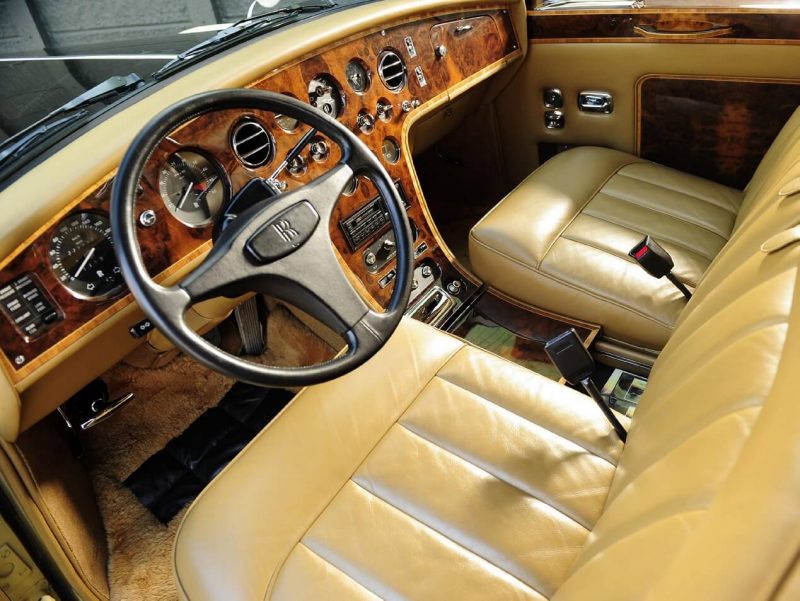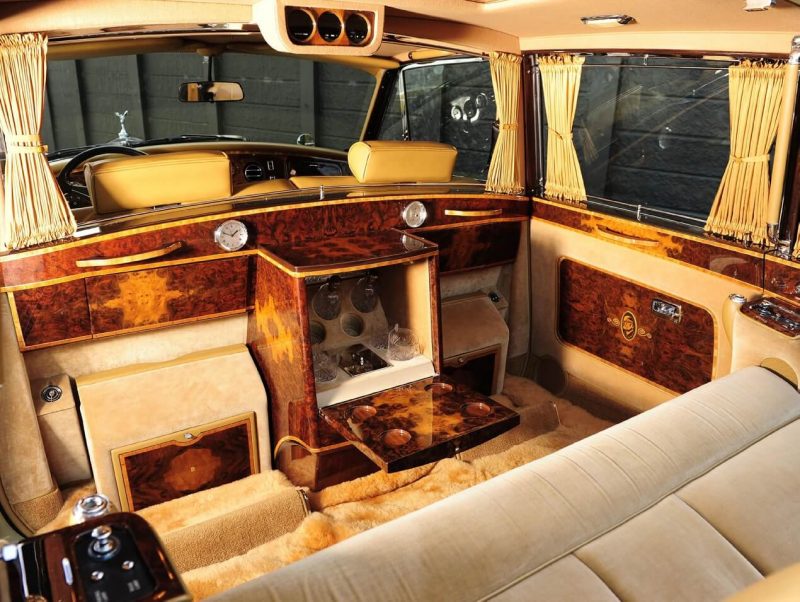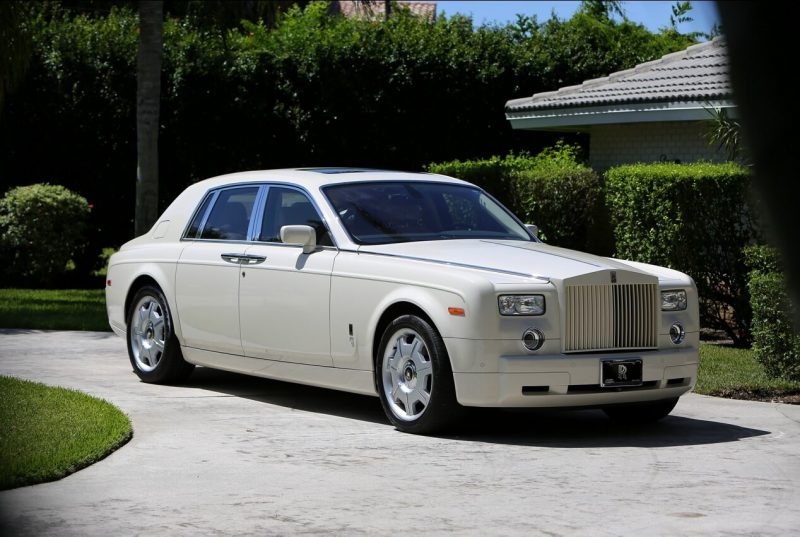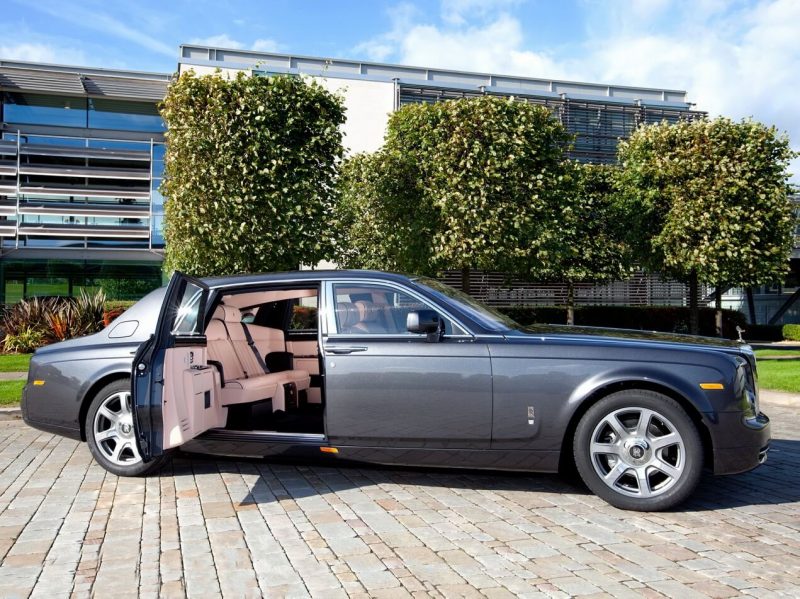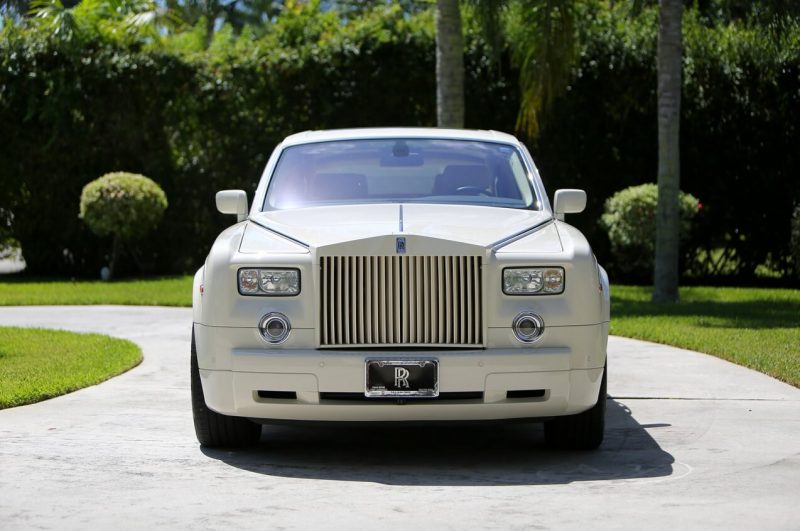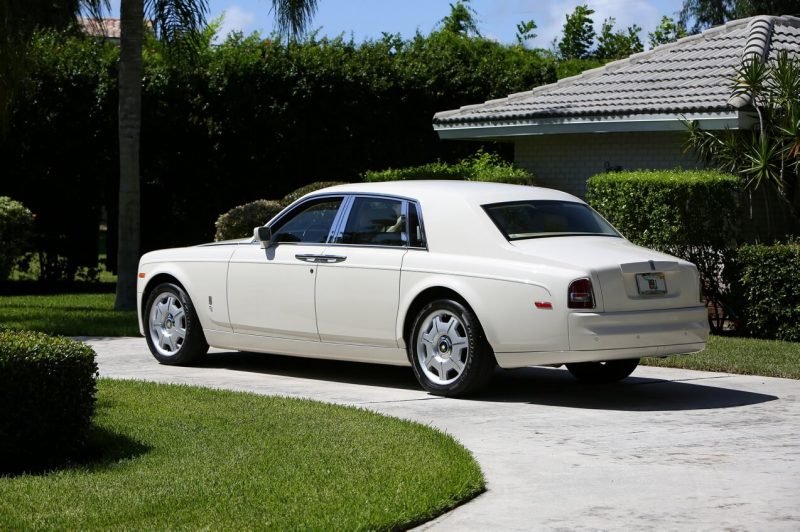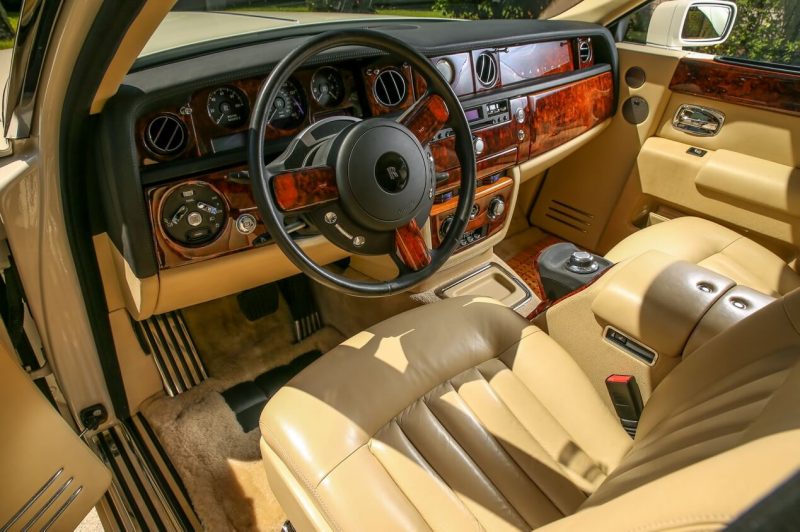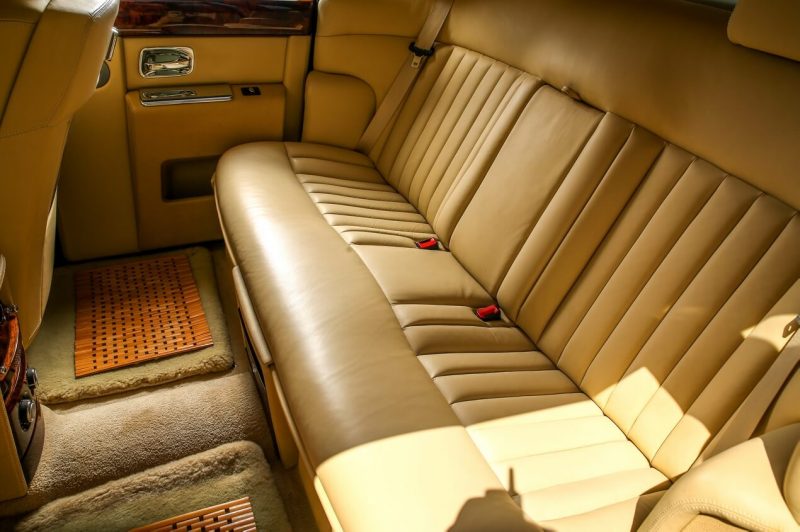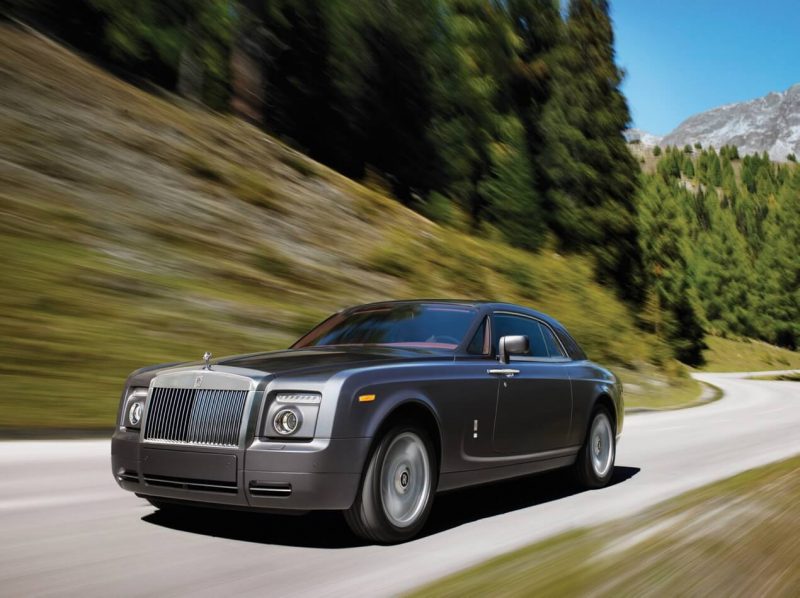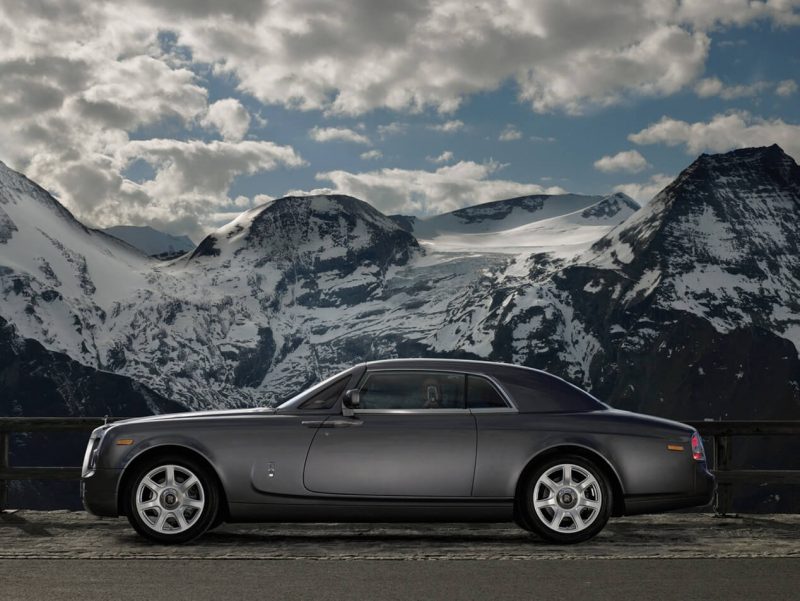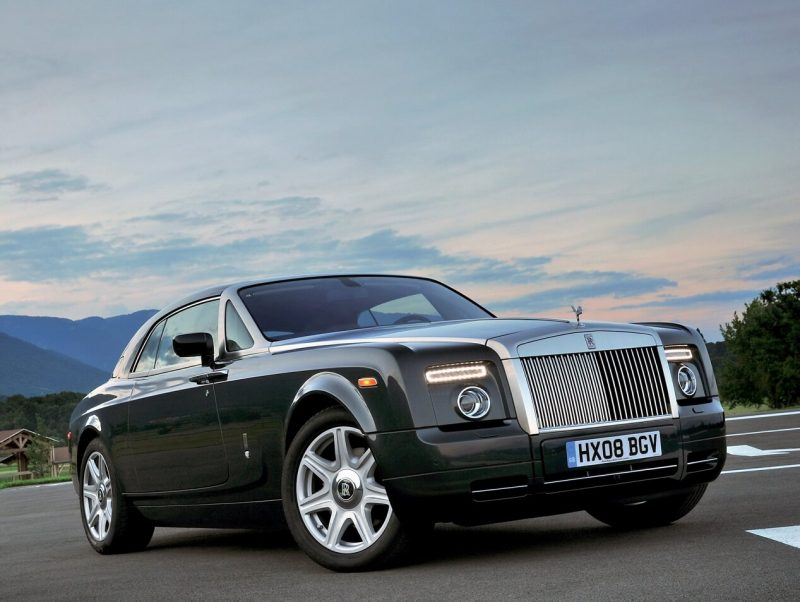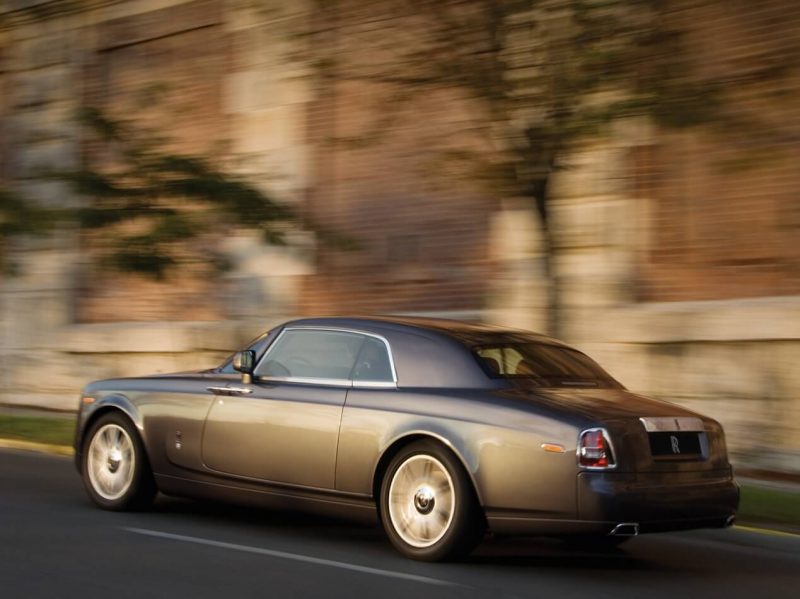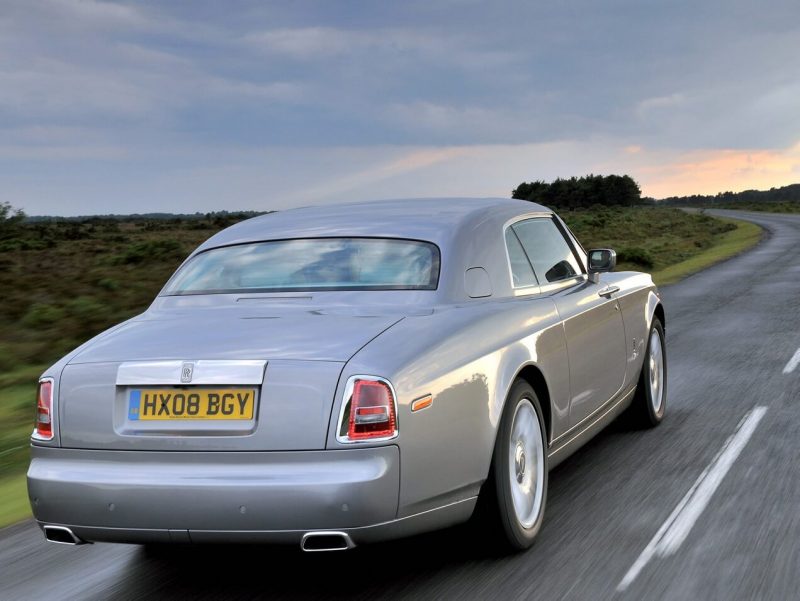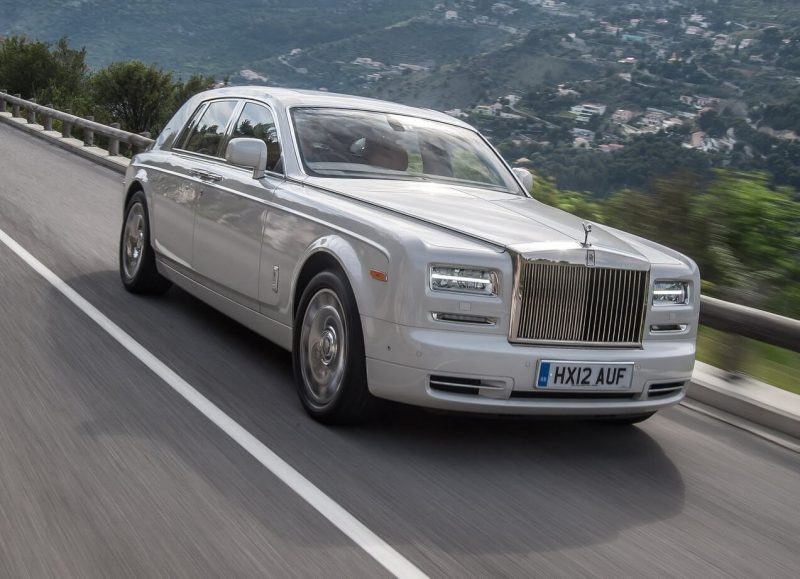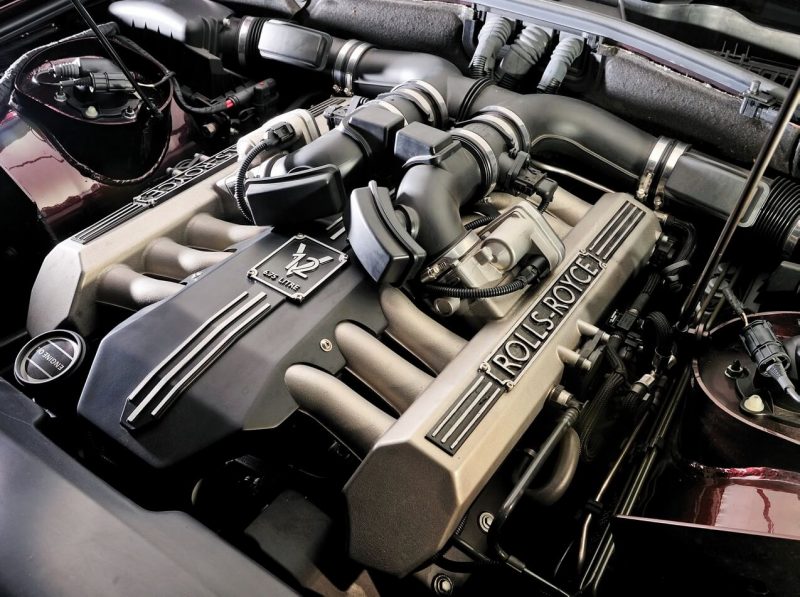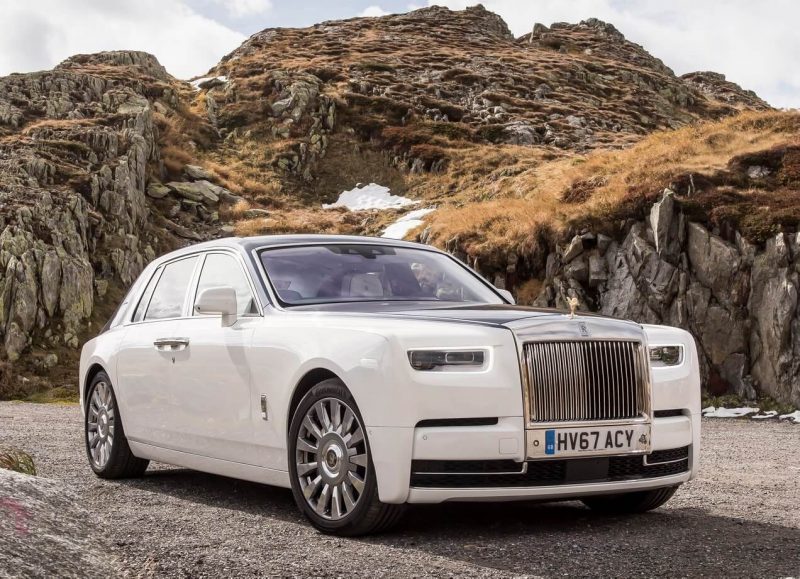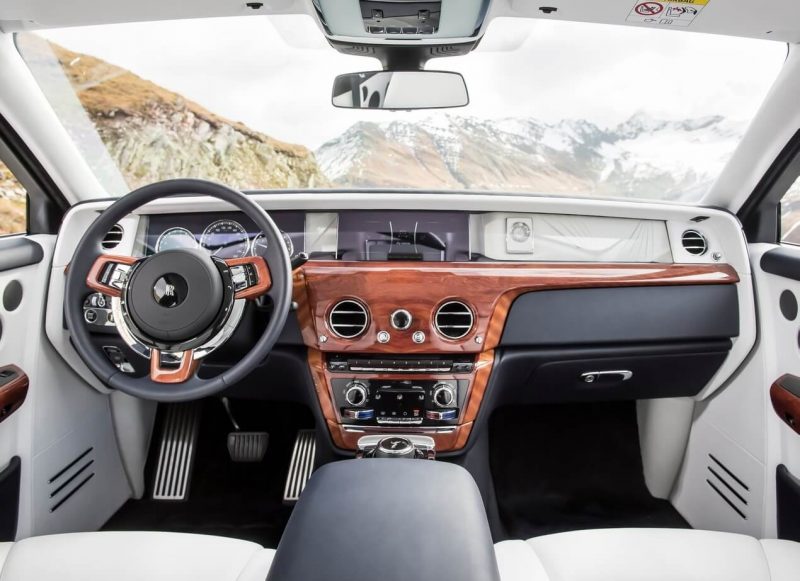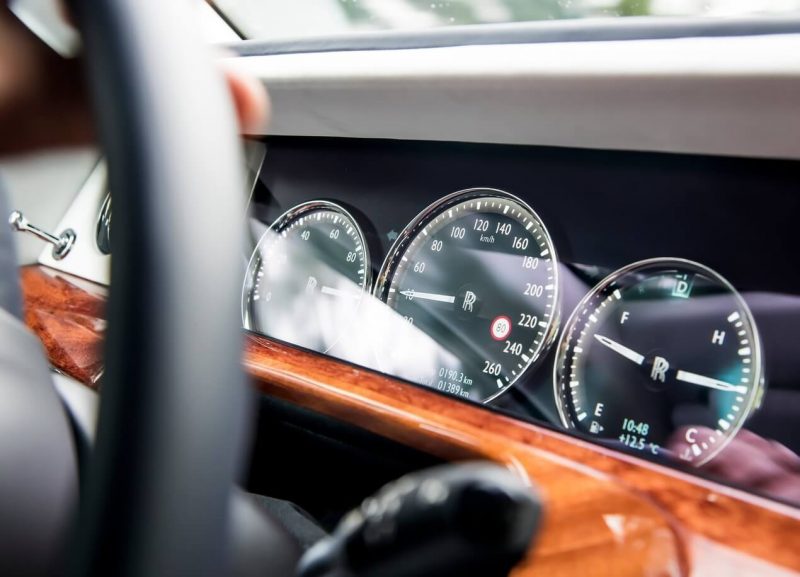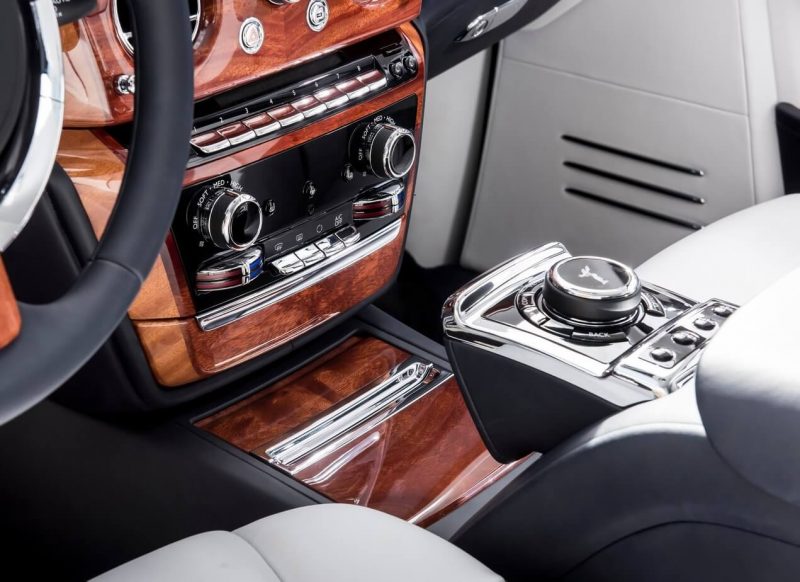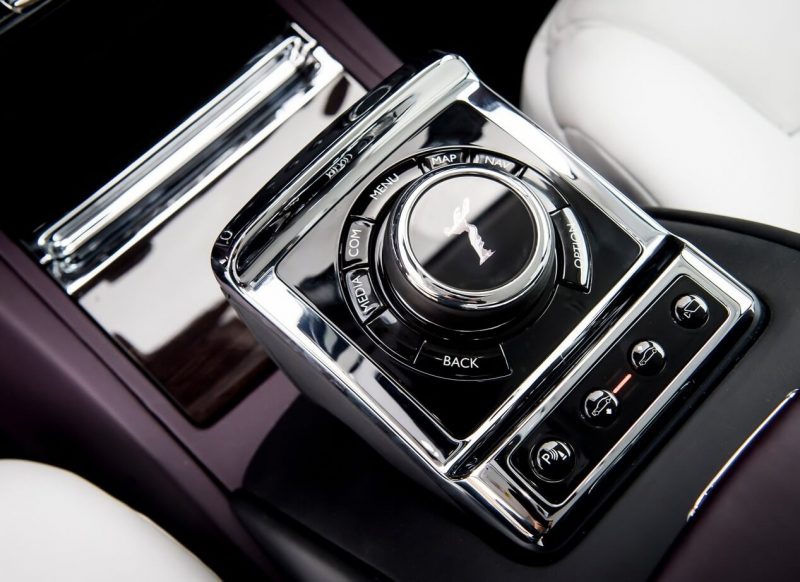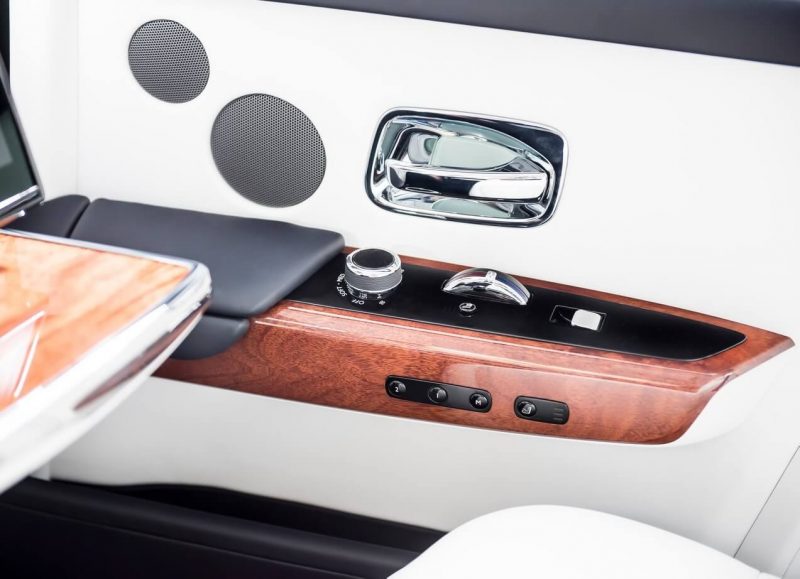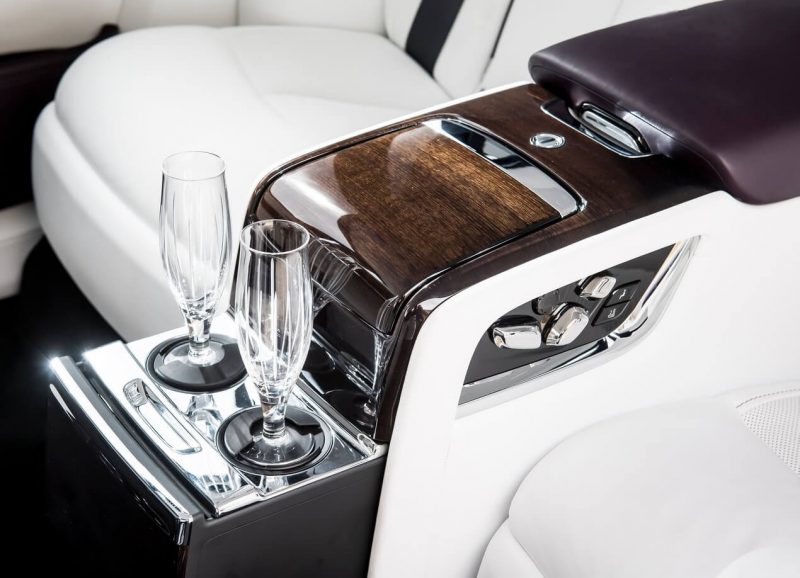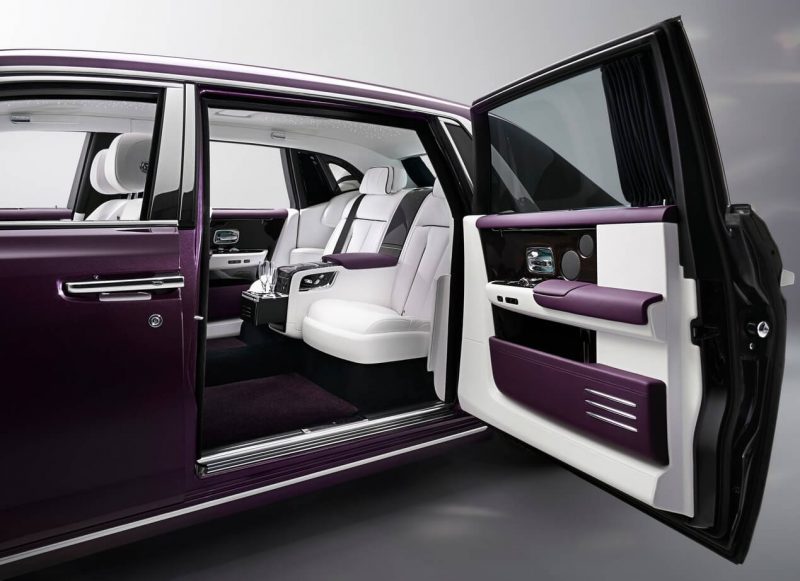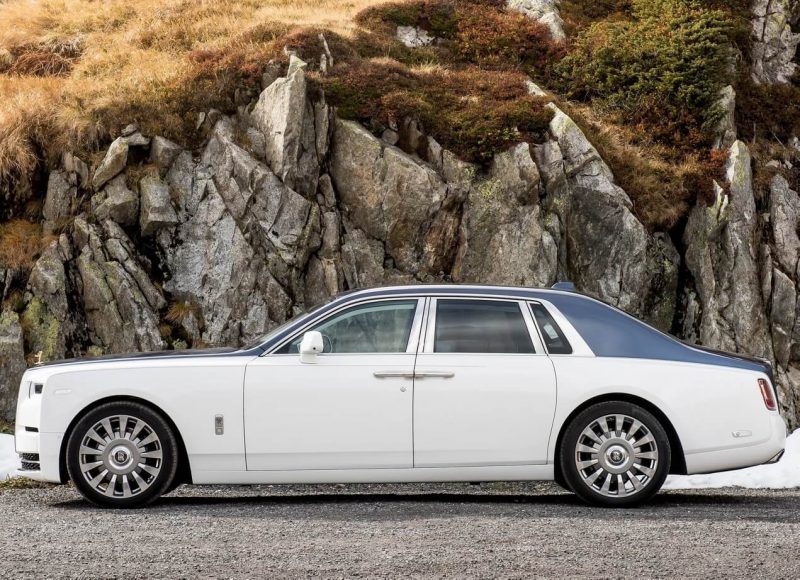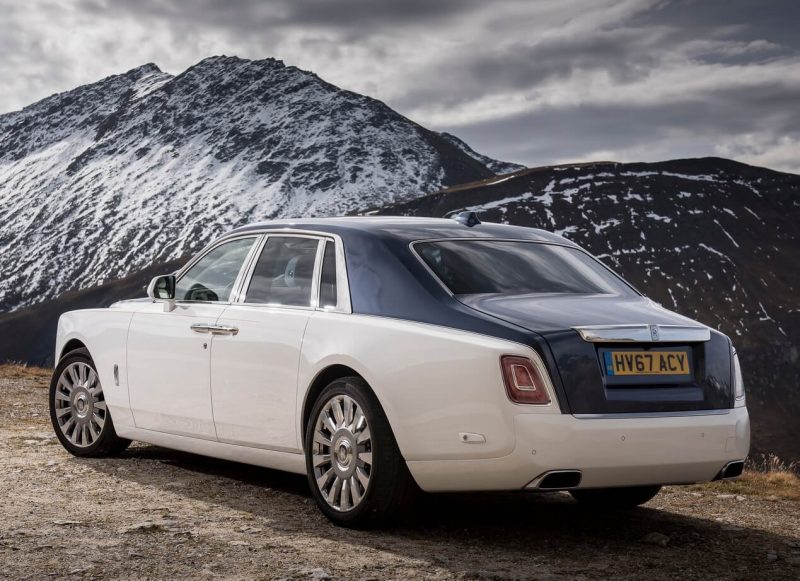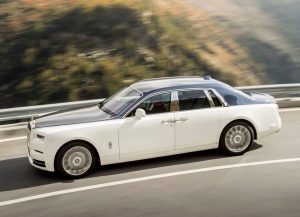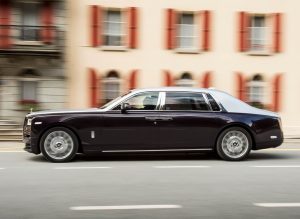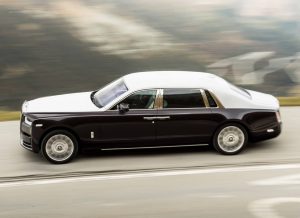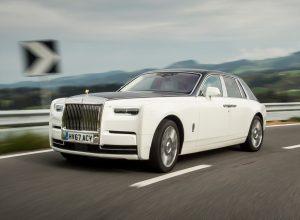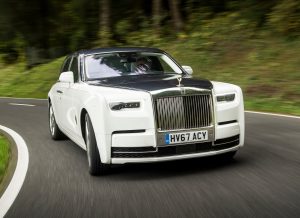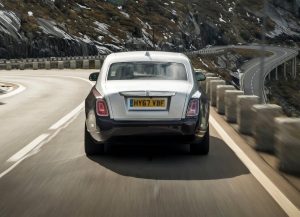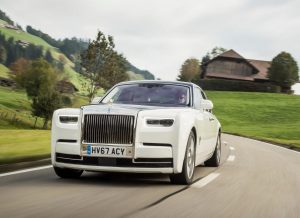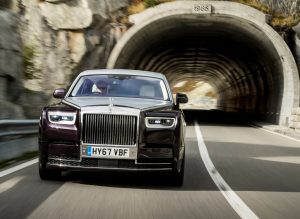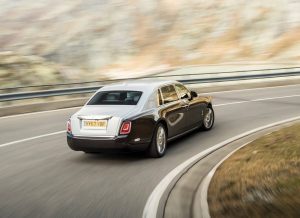Rolls-Royce Phantom
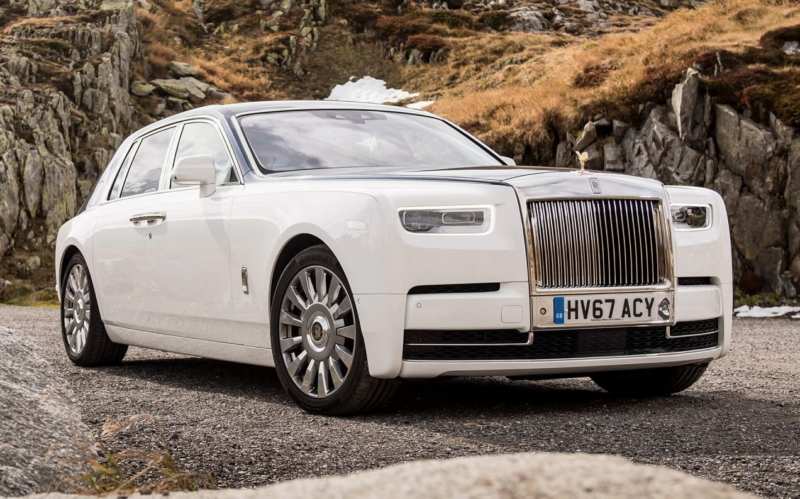
Exactly nine years it took car enthusiasts with a little aristocratic-English accent to see the updated model of the representative range of the company Rolls-Royce Phantom class “F2”, which later became known to customers as the model of 2013. The seventh generation Phantom sedan has been produced since 2003.
And even after a while, the company has not decided to change this car, but it can not be said that after all, a small transformation of the car has been tested and this was confirmed when the car was presented at the Geneva Motor Show in the spring of 2012. In addition, recently, the new Rolls Royce Phantom 8 generation 2018-2019 model year was officially introduced. This took place on 27 July 2017 during a special London event. The whole model range is Rolls-Royce.
- Car history
- Rolls-Royce Phantom I (1925-1931)
- Rolls-Royce Phantom II (1929-1935)
- Rolls-Royce Phantom III (1936-1939)
- Rolls-Royce Phantom IV (1950-1956)
- Rolls-Royce Phantom V (1959-1968)
- Rolls-Royce Phantom VI (1968-1991)
- Rolls-Royce Phantom VII (2003-2017)
- Exterior Phantom VII
- Interior Phantom VII
- Rolls-Royce Phantom VII restyling
- Rolls-Royce Phantom VII restyling (Series II)
- Specifications Phantom VII
- Powertrain
- Transmission
- The chassis
- Rolls-Royce Phantom VIII
- Exterior Phantom VIII
- Interior Phantom VIII
- Specifications Phantom VIII
- Mower unit Phantom VIII
- Transmission Phantom VIII
- Chassis Phantom VIII
- Safety
- Prices Phantom VIII
- Pluses and minuses
- We sum up
- Rolls-Royce Phantom VIII photos
- Test-drive
- Video overview
Car history
Rolls-Royce Phantom I (1925-1931)
The first generation of the world-famous vehicle is a direct successor to Silver Ghost, which has been produced for almost 20 years since 1906. Speaking for the British brand itself, it worked only on the chassis and all the mechanical stuffing, and the customer could choose the body at the discretion of various studios. This principle of work was practiced until the 1950s.
Although Silver Ghost was a popular car, it needed to be replaced. But in the Rolls-Royce manual, they thought standardly, and the customers were conservative, so many people thought that there would be a new device. From the very beginning the new product was called New Phantom.
It had the same running gear as the previous car and a new six-cylinder overhead valve powertrain of 7.7 liters volume. The company decided not to spend their money on the construction of a new chassis, as they believed that customers would not look under the body.
The exterior of the vehicle was very similar to Silver Ghost. The Rolls-Royce Phantom 1 wasn’t a high-speed car and wasn’t an excellent steerability, but it was made to the highest standards by Henry Royce. The car was the most elegant British car of those years.
Most specialists have begun to talk again about the best passenger car in the world. Such a title could be won by competing with cars such as Hispano-Suiza or Cadillac. All New Phantom, which offered with a couple of variants of wheelbase, the company produced in parallel with the car 20HP at the Derbia enterprise. The same factory also produced air engines.
The prepared chassis were then forwarded to the body company, whose body was chosen by the buyer. It’s nice that Rolls-Royce always managed to be cautious about the choice of bodybuilders, about the possible appearance, but it happened that some customers could install some extravagant construction on the chassis.
Whoever bought it was negotiating with the body company a few months before the chassis itself was prepared. From the order of the vehicle itself to its handover to the buyer had to wait from about 6 months to one year. The new “engine” of the Rolls Royce increased in power, and since the brake system had an amplifier drive like Hispano-Suiza, the car became one of the safest in the 1920s.
The cost of the vehicle was not cheap. Only for the chassis, the price tag did not fall below 1,850, and the finished car was estimated at 2,500 pounds. The cars were produced in England for 4 years. In the United States, at the Springfield plant, the models were assembled before 1931. In total, Derby produced 2,212 chassis, and in the States – 1,225.
Rolls-Royce Phantom II (1929-1935)
It’s unusual that the second generation of a British man was created in disputes. A lot of people understood that the car was a typical Rolls-Royce. In fact, this was the case, because the car had the gloss, space, power and prestige. The new model couldn’t help but touch the critics, who repeatedly expressed their opinion in favor of Phantom 2.
From their words it was possible to understand that the model lagged behind the modern technical level. However, there were those who praised the car, highlighting its silent operation. Those who bought a “Briton” could make up their own personal opinion about the car. Often it was a positive feedback. When the economy was in decline, the company was able to build 1,672 luxury models over a period of six years.
If we compare the first generation and second generation machines, the novelty had a completely new chassis, combined with an engine, volume of 7.7 liters, which was installed on elastic supports. In addition, there was a synchronized gearbox and adjustable shock absorbers from the driver’s seat.
Yes, yes, this is not a typo! Already in those years, the English company applied this technology. Body stylistics was more similar to the design of the late 1920s. The traditional radiator was preserved, however, the lines of wings were smooth. The design of the stern area received a rounded shape.
The company, as before, did not manufacture bodies. Large and very heavy machine Rolls-Royce Phantom 2 generation was attractive, perfectly made and had a unique exterior. It is also unusual that during the economic difficulties other companies, which were engaged in the production of large cars, were ruined or changed their working principle. But the firm from England was able to stay true to itself and continued to make a profit.
Rolls-Royce Phantom III (1936-1939)
Designing of the 3rd generation of the already known car began in 1933. During the design, the management decided to use for the novelty a new power unit with an unusual for those times V-shaped arrangement of cylinders. When 1935 came, in London, there was a car show, where the Rolls Royce Phantom of the 3rd generation was presented.
The car became bigger in size and heavier than the second family. It was nice that the model was still distinguished by its silence and majestic appearance. As planned, the car received a new V-engine with 12 cylinders. The engine had a volume of 7,338 litres and received a central camshaft, an upper valve arrangement with hydraulic compensators in their actuator, as well as a double ignition system and wet sleeves.
The powertrain was like a prototype of the Rolls-Royce “R” and “Merlin” series aircraft engines. It had basic parts that were cast in light alloys: a monolithic crater, along with the cylinder blocks, was made of an aluminum alloy, the cylinder bushings were made of cast iron, and the head of the block was also made of aluminum. As a result, the “engine” gave out about 165 “horses”.
To make the model competitive (in particular, with cars from America), the British car was equipped with a very spacious bodywork. To achieve this, its base was decided not to reduce.
It was the third generation of the Rolls Royce Phantom that became the first production machine in England to receive such an engine design. Despite the fact that the new model was the most technically difficult, it was also the most unreliable. Because of the new engine, there were difficulties with the design of the machine as a whole, which caused constant difficulties for drivers.
However, it is interesting that the car received another design innovation, used on the Rolls by Phantom III, which was no longer controversial. It was an independent lever-type suspension installed in front, with spiral springs and hydraulic shock absorbers similar to those of the Cadillac.
The rear part had a familiar dependent suspension with springs. The engine and wheels were tied together by a four-stage mechanical box. British-made car was assembled until 1939. When the Second World War began, the production of vehicles was stopped.
Rolls-Royce Phantom IV (1950-1956)
Only 18 chassis of this model, which was the most rare in the history of the company, were built in the period from 1949 to 1955. To date, Rolls Royce Phantom 4 generation remains the only model of the company with an eight-cylinder engine. The novelty was distinguished by the fact that it was supplied only to monarchs, representatives of governing dynasties and heads of state.
During the fighting developed a whole line of newest “engines”, which had from 4 to 8 cylinders, for the future postwar production of vehicles. At the same time, some prototypes of the machines were tested, which received an ordinary “eight”.
Very unusual, but the cost of the cars were not disclosed, and one of the conditions of delivery was a ban on resale. The buyer was required to return the car to the company if he no longer needed it.
One of them was the experimental Bentley, nicknamed “scalded cat”, as it had exceptional dynamics. Further, the Duke of Edinburgh, the future husband of Queen Elizabeth 2, several times drove this fast car. He was impressed that the car was easy to drive and had good speed data.
The royal family had previously bought a Rolls Royce, however, it was their personal car. When it was necessary to travel officially, Daimler cars were used. With this in mind, Roll-Royce took the chance to change the established custom as a challenge. Therefore, for Elizabeth ordered an official car in 1939.
But the first car in the lineup of Phantom IV was not a royal model, and a kind of prototype pickup truck. It was built in 1949. You may be surprised, but it was probably the fastest small truck in England, as its driver was once fined by the traffic police for exceeding the speed limit.
Some parts of the future model have decided to take, changing them a little bit, from the serial version of Silver Wraith. The large chassis, which had an X-shaped amplifier in the middle area, was further strengthened and the wheelbase was pulled out to 3,683 millimeters. A 5,675-litre B80 engine was placed under the hood.
Power engine was from 145 – 162 horsepower. The engine was distinguished by an aluminum head, a single casting of the crankcase and block, upper inlet and side outlet valves. The engine capacity was enough to make the 2,250-kilogram machine accelerate by more than 160 km/h.
Although it was very important to set up the car to move slowly when the official ceremonies were held so that the motor would not overheat. A thorough cooling system worked well here. The synchronizer was a single-disc clutch and 4-speed “mechanics”, where there were synchronizers at 3 top speeds. After a while it was replaced by an automatic transmission (1954-1955).
For convenient boarding and disembarkation of passengers, the massive rear doors open backwards. The interior is separated from the driver by means of a partition. The order was fulfilled on July 6, 1950. Unusually, but 16 cars have survived to this day, despite more than 50 years of its existence. In addition, the cars are on the move.
Rolls-Royce Phantom V (1959-1968)
In total, the company has released 516 models of the fifth generation of the famous Briton. The cars were developed on the chassis of the Rolls Royce Silver Cloud II. The engine was a V-shaped 8-cylinder engine with a capacity of 6230 cubic centimeters. The output was about 200 “horses”.
Synchronized motor with four-stage automatic transmission General Motors. The vehicle received a power steering and drum brakes. The car weighed about 3000 kilograms in the body of the Mulliner Park Ward. Interestingly, the Rolls Royce Phantom V was owned by the famous John Lennon.
Rolls-Royce Phantom VI (1968-1991)
The car was produced in England for a long time, but despite such a long period of time, only 374 models of an exclusive sedan were produced. The fifth generation was popular with the wealthy people of the world, because it was considered the most prestigious car, which was produced by a British company. Inside the body, the production of which was engaged in a subsidiary of the Rolls-Royce – Mulliner-Park-Ward, was placed 7 people.
The same company was responsible for the assembly of the frame. The material was aluminum, which was used for door panels, luggage compartment and hood. We only assembled the car by hand. Salon was equipped with 2-zone air conditioning. All the glasses of the 4-door car had a special durability, because they were hardened by a special method.
It’s important to remind you that 16 of the sixth Phantom’s cars were made in the back of a london. In other words, the roof, which was placed on the rear seats, could be tilted and folded.
Under the hood there was room for an aluminum V-type eight-cylinder 6.75-liter engine. English experts did not like to advertise the power, however, some experts believe that it was 200 – 220 horsepower. When 1989 came, the British already had another engine, which was installed on the Silver Spirit.
It had a working volume of 6.23 litres. In the first and second case, the engines operated together with an automatic 4-stage box. This was enough to accelerate a massive sedan up to 180 km/h. However, fuel consumption was enormous – 30.4 liters in urban mode for every 100 km. Despite its high weight, the truck had a spring suspension and smooth running.
This was reflected in good handling. For a timely and quick stop of the 5th generation sedan Rolls Royce Phantom, was responsible for the brake mechanism of the drum structure. During its sales, the model was considered the most expensive car in the world. It is also interesting that the “sixth” generation of the Phantom was used for the official car of Queen Elizabeth 2 until 2002.
Rolls-Royce Phantom VII (2003-2017)
The seventh generation car was produced from 2003 to 2017. For the first time the car was shown officially on January 5 during the Detroit International Motor Show. It is worth noting that the British leadership has not accidentally decided to present the novelty here, as Detroit acts as the leader in the number of purchases of Rolls-Royce cars in the world.
The creation of the new car was prompted by the situation that occurred in 1998, when management was transferred to the German automobile company BMW. But this question lasted a very long time, because the company was required to obtain an agreement from the former owner of the military industrial group Vickers. In addition to BMW, Volkswagen wanted to own a British company.
However, everything was settled – BMW began to control the Rolls-Royce. Interestingly, Volkswagen took custody of the trademark Bentley, which was part of a joint company with Rolls-Royce and production facilities located in Crewe, England. The seventh generation of the famous sedan began to collect in Goodwood, West Essex County.
Exterior Phantom VII
In order to start working on the appearance of the new product, the German leadership decided to invite Jan Cameron and his group of employees. His California luxury car design studio was also involved in the creation. It is worth saying that these specialists managed to do the impossible – to create a stylish appearance of the car, which would meet modern criteria, but could save the traditional majesty.
Presence of serious and exact architectural lines, laconic body forms only allocate inherent refinement of Phantom and its history. The famous huge radiator grille, which resembles a palace fence, was decorated with a well-known statuette of the “Flying Lady”. She is an indispensable decoration of the Phantom model since 1925.
Only in terms of safety did they decide to equip it with a special device that allows it to hide in the hood. This can be done by pressing a special button. The “Flying Lady” is removed automatically during frontal impact or during mechanical influences on her.
Passenger doors have a carriage construction and are opened against the machine stroke. In order to allow the passenger doors to be opened independently of the front doors, a complex servomechanism with electronic control, which allows you to open the door from a distance.
This was done not only for convenience, but also for safety reasons. The massive 5.8-meter body (version with a long base has a length of 6.1 meters) was installed on 21-inch “rollers”, which are shoes Michelin. The discs received the Rolls-Royce logo – double image of Latin letters RR.
This sign is placed on a special planetary device in the hub, which rotates to the side, in the opposite direction of movement of the machine. It turns out that, despite the speed, the logos are always in the original vertical position.
When the question of improving the 7th generation was raised, the designers in no way wanted to influence the successful image of the already existing appearance, and therefore only slightly corrected it. In this case, they replaced the front optics, which previously had a round shape of lenses, with subtle rectangular headlights, which gave refinement and changed all the front lighting to LEDs. Moreover, it will be automated.
The model has a bumper with an easily converted shape. An individual line of the body and a protruding hood are distinguished, which preserves the “family ties” with the predecessors of this company. There is still a monumental radiator and the same familiar figure of Spirit of Ecstasy.
When driving less than 50 km/h, the headlights will dissipate, which will allow you to better navigate the road surface and notice any obstacles. If you travel more than 50 km/h, the light will be more concentrated, which will increase the range of your view of the road. Once you reach the 120km/h mark, the LED lamps will change the angle of their illumination and allow you to illuminate as far as possible.
We have applied the ability of turn illumination, which uses electronically controlled reflectors that focus the headlights towards the direction of travel, which in turn guarantees a pretty good illumination of the surface in front of the car during a turn. In addition, in automatic mode, when the wipers will work for more than two minutes, the “fog lights” are activated immediately.
Interior Phantom VII
The interior of the “eighth” Phantom has an atmosphere of discreet luxury, which is characteristic of the English hereditary aristocracy. The seats, together with some finishing elements, are made of bull leather, which is cut with a special laser.
The central panel, along with various inserts, is made of rare woods. It is important that during the production of the panels, they are mounted wires and electronic boards, so it feels like all the systems “masked”. The devices, together with ventilation deflectors, are enclosed in chrome bezels.
The lever, which switches the automatic box modes, is placed on the steering column. In general, all interior elements, materials, the client can choose personally for himself. The salon has a cupboard for drinks, and if desired, you can extend the TV screen.
Everything you need, including maps and various media files are displayed on a large 8.8-inch control screen. The presence of programmed controller bookmarks is a pleasure, which provide access to the desired functions with a single touch. For an upholstery of an internal interior, company Rolls-Royce uses only the real leather and a tree.
For example, 43 details are made of wood, and each of them has 28 different layers. To avoid cracks, an aluminium layer has been added to the parts. This company has been famous for its high quality of interior decoration for decades. And it consists of 450 pieces of genuine leather, separately painted and highlighted. In order to cut them accurately they use laser technology, and after sewing.
The newest technologies to help the driver and the latest interface with the developed multimedia system are installed on this vehicle. A new navigation system, working with satellites, with convenient and useful functions, for example, “three-dimensional map with a relief of the landscape”, “virtual guide”, “an increased list of useful institutions and attractions”, a new possibility of “planning a difficult route”.
Rolls-Royce Phantom VII restyling
The cars produced in 2009 had a new front bumper and radiator grille with smaller bars, 21-inch “rollers” in the “base” and LED illumination of door handles. Inside, the British have acquired a new block of entrances, which provides the ability to connect to screens designed for 12 inches. It was installed in folding tables.
We decided to use new front and rear door trim with built-in handles. Space was found for the new double tailgate lamps in the rear racks, which can be adjusted in two directions. New climate, volume and rear window controls were installed, and the rear window controls were moved to the doors.
Rolls-Royce Phantom VII restyling (Series II)
The restyled version of the car was shown to the public in March 2012 during the Geneva event. For future customers, the car was a model of 2013. Vehicle version 2, which worked on and continues to work on, the chief designer of the company Giles Taylor, stands out from the previous version of the new full-fledged LED headlights, which are horizontally separated by LED strip DHO.
Instead of standard round lamps installed rectangular lamps with LED filling. The radiator grille received a solid stamping, and the front bumper got another shape. A new corporate badge with an integrated front fender clearance lamp was also needed.
Specialists increased the chrome frame for the rear side windows, and the lower part of the luggage compartment also received a chrome strip. A different dashboard was placed in the cabin, where the screen diagonal was enlarged (200 millimeters), another rotating machine system adjustment controller was used, which was borrowed from Rolls Royce Ghost. The upgrade has enabled the refined British sedan to be equipped with a new, simplified seat design, improved audio and communication systems and a new 8-stage ZF box.
Specifications Phantom VII
Powertrain
This machine is equipped with a 6.75-liter 48-valve V12 engine with direct fuel injection and change of gas distribution phases. The engine produces 460 hp and 720 Nm of torque. There is a small feature – already 75% of the maximum engine traction is available at 1000 rpm.
In an amazing 5.7 seconds, the sedan speeds up to 100 km/h. The declared maximum speed is 240 km/h. The engine was created on the platform of the engine N73B60, which is installed on the BMW of the seventh series. However, for the prestigious sedan it was upgraded.
Transmission
In the Phantom with such a powerful engine is synchronized automatic 8-speed gearbox ZF, which, according to engineers, together with their modifications of the power unit can reduce fuel consumption by about 10% compared to the prerestyling version.
It ranges from 14.8 liters per 100 km in mixed cycle. Lovers of the care of our Earth’s ecosystem will love it, which also reduced the emission of CO2 from 388 to 347 g/km.
The chassis
Technically, Rolls Royce has remained essentially the same as he was at first. But the engineers did strengthen the aluminum body structure, reduce vibration and increase the quality of the noise insulation. In addition, the mounting points of the two-lever suspension were changed to prevent vibrations from being transmitted to the steering wheel, and the rear suspension was converted to increase the stability of the vehicle.
Perfect smoothness was achieved by installing an active air suspension, which received adjustable shock absorbers. All this allows the car to pass a “lying policeman” at a speed of 80 km/h – and no one will feel anything inside the car.
One can not even worry about the quality of Rolls-Royce production. In fact, it is one of those cars which are assembled manually. It takes about 450 hours to assemble one such vehicle.
Rolls-Royce Phantom VIII
Exterior Phantom VIII
The model is the first machine to try on a new complete aluminium platform. Looking at the appearance of the Rolls-Royce Phantom 2017 with the latest eighth generation, the model can be easily confused with each other. It is clear that in terms of design there are no major revolutions, but there are still improvements that have given the exterior of the novelty a more modern look.
Rolls Royce Phantom 2018 has a stylish body with full-fledged LED headlights, which are complemented by long-range laser-luminescent sections. These headlamps, in turn, provide lighting up to 600 meters in front of the car. Now the original radiator grille is connected to the body of one unit and placed higher than the previous car. The statuette itself was placed 12.7 millimeters higher than the 7th generation.
The side of the British sedan is distinguished by huge doors and original 20-inch wheel rims. The exterior does not have extra shapes or non-harmonious shapes. The novelty looks like a long and huge sedan, which is basically the case. Thanks to the wide opening doors, boarding and disembarkation is very easy.
The doors themselves are heavy and have a servo drive, which once again emphasizes the status of the vehicle. The rear-view mirrors are mounted directly on the door itself. The novelty looks solid, strict and imposing. It feels like the car has been knocked out of a large piece of aluminum, which has some truth.
Thanks to the extensive use of aluminium and aluminium alloys, as well as a new modular platform, the body stiffness of the Rolls-Royce Phantom of the 8th generation has been increased by 30 per cent compared to the previous model. The dead weight of the sedan has increased by 75 kilograms, resulting in a total weight of 2,625 kg. The extra weight is due to the installation of many equipment and the use of improved sound insulation.
Believe it’s worth it! In general, Rolls Royce Phantom 2018, appeared before buyers as an object of art, not a car. Interestingly, the British are stubbornly and consistently ignoring market trends and the speculative pursuit of technology. It is simply impossible to find any shortcomings in the appearance of the machine. So let’s move smoothly to the interior.
Interior Phantom VIII
The salon just can’t be described in words! When you get inside a car, it seems like you’re in your own world, hiding from everything that happens outside. The important thing is that it is very quiet in the sedan, because according to the manufacturers, they have improved this index by 10 percent. The noise insulation materials alone are 130 kilograms! In addition, there are double 6mm glasses.
The interior of the Rolls Royce Phantom’s eight is a real work of art. The installed front and rear doors received a servo drive. In front of the driver is a chic steering wheel, a digital dashboard with a color screen, designed for 12.3 inches.
In addition, the British salon has round air duct deflectors, a multimedia system with a retractable 12.25-inch screen, Wi-Fi hotspot, navigation system, Apple CarPlay and Android Auto. All of these systems can be controlled using washers, which are common for BMW owners. The main washer is located between the two front seats and in the armrest of the rear seats.
There is no tachometer on the British car. In its place, there is a traditional power reserve indicator to the left of the speedometer. On the right side of the speedometer there is a fuel level and engine temperature sensor. In addition, there is a projection display, and all seats have an electric drive settings, heating, ventilation and massage function.
Rear-mounted seats can be turned around a little so that people don’t strain their neck muscles during communication. The back of the interior is equipped with folding tables and monitors. Armrests have a heating function and the ceiling has a starry sky. In addition, in the box under the armrest of the rear seats, there are glasses for champagne, or glasses for whiskey.
The solid door handle is made of hand polished steel, however, it is duplicated from the inside by the touch key of the electric actuator. As an option, a 3-seater sofa or a pair of individual seats can be installed. A natural wool rug is located underneath the feet.
The car also has a stylish accessory – in the back door box of the Rolls Royce Phantom 8 generation hid a small branded umbrella. Although small, it is rated as a used golf car. In general, no matter what we say, whether it’s a seat, floor, roof or multimedia system, it’s all at the highest level. Even long journeys will not bore the owner.
Specifications Phantom VIII
Mower unit Phantom VIII
The atmospheric V-shaped 12-cylinder engine model, 6.75 liters in volume, has gone down in history. The new generation Rolls-Royce Phantom 8 has a significantly improved engine (which includes the presence of new pistons, connecting rods and cooling systems) and a couple of turbochargers.
Capacity has grown from 460 to 571 horsepower, and torque from 720 to 900 Nm. But it is important not to forget that the principle of the powertrain is aimed at a smooth and comfortable ride to this day.
Transmission Phantom VIII
As a gearbox, the British decided to use an upgraded eight-speed automatic gearbox ZF from the previous generation. The principle of gear shifting operation is now synchronized with the navigation system. For example, before climbing, the electronic system in advance includes the lowered speed.
As before, the entire torque is only transmitted to the rear wheels. The first hundred is reached by a sedan in 5.3 seconds, and the limiting speed mode is limited by electronic system at a mark of 250 km/h.
Chassis Phantom VIII
A unique two-lever and five-lever suspension was installed at the front and at the back. Instead of springs, they decided to use pneumatic stands, which maintain a constant clearance and inviolability of the body, despite the solid holes on the road. It is possible to carry here presence of adaptive shock absorbers which are operated by electronic system.
In addition, the car is equipped with rear wheels, which make the large car quite maneuverable. It is noteworthy that with the help of a stereo camera under the windshield, the system allows you to recognize potholes in front of the sedan, and to prepare the chassis comfortably to overcome them in advance.
Similar systems can be observed at Mercedes and Audi, however, Rolls Royce engineers managed to implement them in a slightly different way – the British managed to achieve this result not with the help of active hydraulics or electromechanical drives, but with the help of variable rigidity of stabilizers of transverse stability.
Safety
The Alertness Assistant system acts as a security tool and electronic assistant in standard mode, with 4 cameras providing a panoramic view from a bird’s eye view, as well as Night Video and Video Assist cameras, Active Cruise Control.
They have not forgotten to equip the Briton with an automatic braking system with the option of finding pedestrians, a system that is able to monitor objects in the blind areas of side mirrors and unintentional intersection of road markings, as well as cross-traffic warning. There is probably no point in mentioning the abundance of airbags and special seat belts.
Prices Phantom VIII
A lot of people are interested in the question, “How much is the 8th generation Rolls Royce Phantom?” The new product will be on sale from autumn 2017. In England, the model will have to pay at least 400 00 pounds for the model. The car of the 7th generation cost 350000.
It turns out that for our country, the cost of Rolls-Royce Phantom VIII will be no less than $627600.00. Only Bugatti Shiron’s hypercar is more appreciated. Interestingly, on our territory only about 250 copies of the VII Rolls-Royce Phantom family were officially sold.
Pluses and minuses
Pluses cars
- Pull, stylish and modern appearance;
- Innovative front lighting;
- Full aluminium platform;
- Large wheels;
- The unusual rear door opens;
- Beautiful exhaust pipes;
- LED lighting;
- Forward optics beats up to 600 meters;
- Lots of chrome parts;
- Sophisticated salon;
- Application of high quality materials for interior decoration;
- Two large colour displays;
- Comfortable transmission control selector;
- Comfort multifunctional steering wheel;
- Ability to design a salon to your liking;
- Very comfortable seats with good side support and heating, massage and electrical adjustment functions;
- Doors received servo drive;
- Rear row of seats has an excellent level of comfort;
- Large and comfortable seats;
- Wool carpets;
- Qualitative audio system;
- Many free space;
- Multifunctional central armrest located on the rear sofa;
- If there are 2 seats in the back of the car, they can be turned towards each other to make it easier to have a conversation;
- Perfect noise insulation;
- Admissible volume of luggage compartment, as for this class of cars;
- Rich equipment;
- Qualitative assembly;
- Powerful power unit;
- Transmission running smoothly;
- Relatively low fuel consumption;
- Smooth running;
- Soft suspension;
- Personal management;
- Rear wheels improve manoeuvrability by means of steering
- Good security;
- Many electronic helpers.
Cons of a car
- Higher value;
- Expensive spare parts and components;
- Large size;
- Wheel drive is missing.
We sum up
The new Rolls Royce Phantom of the 8th generation, although it hasn’t changed drastically, has become much better and more refined. Separately, it is worth mentioning the innovative front optics, the design of the front panel to suit your taste, the “starry night sky” and a full-fledged aluminum platform. Everything inside also looks expensive and of high quality. The level of noise insulation has increased significantly.
There is a lot of free space in the interior, so anyone can feel comfortable there. Despite the rather powerful power unit, it does not want to drive, as usually, the owners of these machines, have already achieved a lot in their lives and do not want to fuss. You understand that you drive the most expensive sedan, which makes you a priori above other drivers.
Finally, the English experts thought not only about the rich people sitting behind, but also about the driver, significantly improving his place. The company decided to give up the usual mechanical character of the dashboard in the direction of digital technology. Rolls-Royce Phantom VIII was able to keep the high standard of quality, power and comfort.
We can say more – the model was able to raise it even higher. It is not for nothing that this car company is associated with quality and reliability. That’s why some wealthy people are not stopped even by such immodest price tag, which fully justifies itself.
We advise you to read the article: Rolls-Royce history


